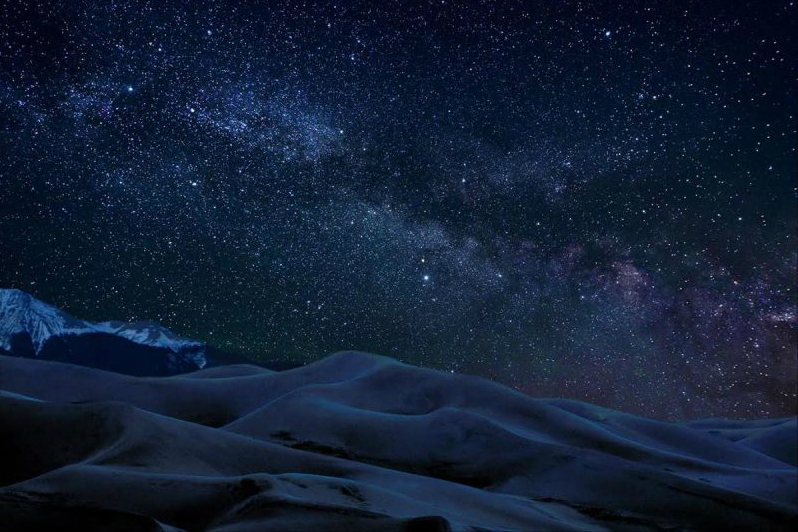Thanks to urban sprawl, many Americans have never truly seen the night sky. Light pollution has made it harder now than ever before to see the heavens the way our ancestors did. The International Dark-Sky Association (IDSA) is working to combat the problem by encouraging the development and sustainability of official dark sky parks around the world. This month, Colorado’s Great Sand Dunes National Park and Preserve became the latest to receive an official Dark Sky Park designation.
The unique geography and topography of Great Sand Dunes National Park have long made it a huge draw for astronomy- and outdoor-loving travelers. Most notable is the Sangre de Cristo Mountains which help buffer it from the urban glow of Colorado’s largest cities to the northeast. In a statement earlier this month, park superintendent Pamela Rice said, “It’s no surprise that Great Sand Dunes has been building a reputation for good night sky viewing. The dry air, high elevation, and lack of light pollution all make the park an ideal dark-sky destination. We are thrilled with receiving this recognition as an International Dark Sky Park.”

Its nearly 150,000 acres encompass a vast array of pristine grasslands, wetlands, dunes, forests, and alpine tundra. The site was established in 1932 as Great Sand Dunes National Monument and subsequently expanded into a National Park in 2000. Its landscape has, of course, changed little in the last 90 years. But, the IDSA recognizes the park staff’s strong, ongoing efforts to preserve its terrain, its borders, and the sky overhead.
Sadly, the United States is home to some of the world’s worst light pollution. Northeasterners from New England down through Washington, D.C. live under a constant haze of artificial light that obscures most of the night sky. Thankfully, East Coast stargazers need only drive a few hours west of Philadelphia to Cherry Springs State Park to see one of the best parks in the country for dark sky viewing. Indeed, the skies here are so black that it’s designated a Gold Level International Dark Sky Park, the International Dark-Sky Association’s highest honor. For Left Coasters, Death Valley National Park and Joshua Tree National Park are among the country’s other roughly two dozen official Dark Sky Parks.
Great Sand Dunes National Park regularly hosts a full schedule of excellent night sky programs to teach park visitors about astronomy and stargazing. The park is also planning an official celebration event this summer to honor its new designation.


